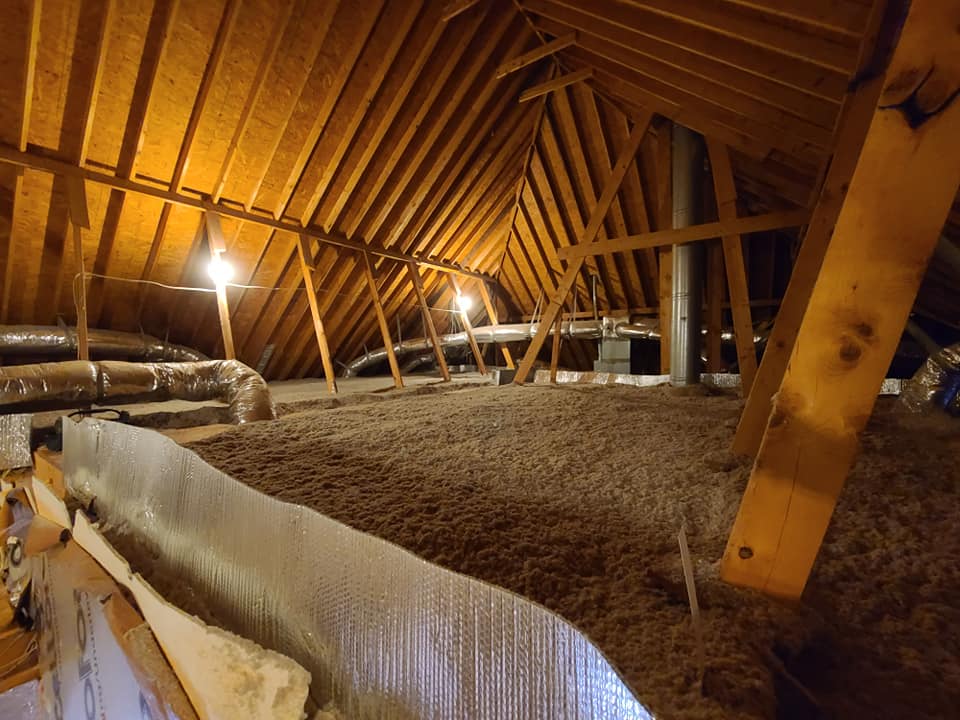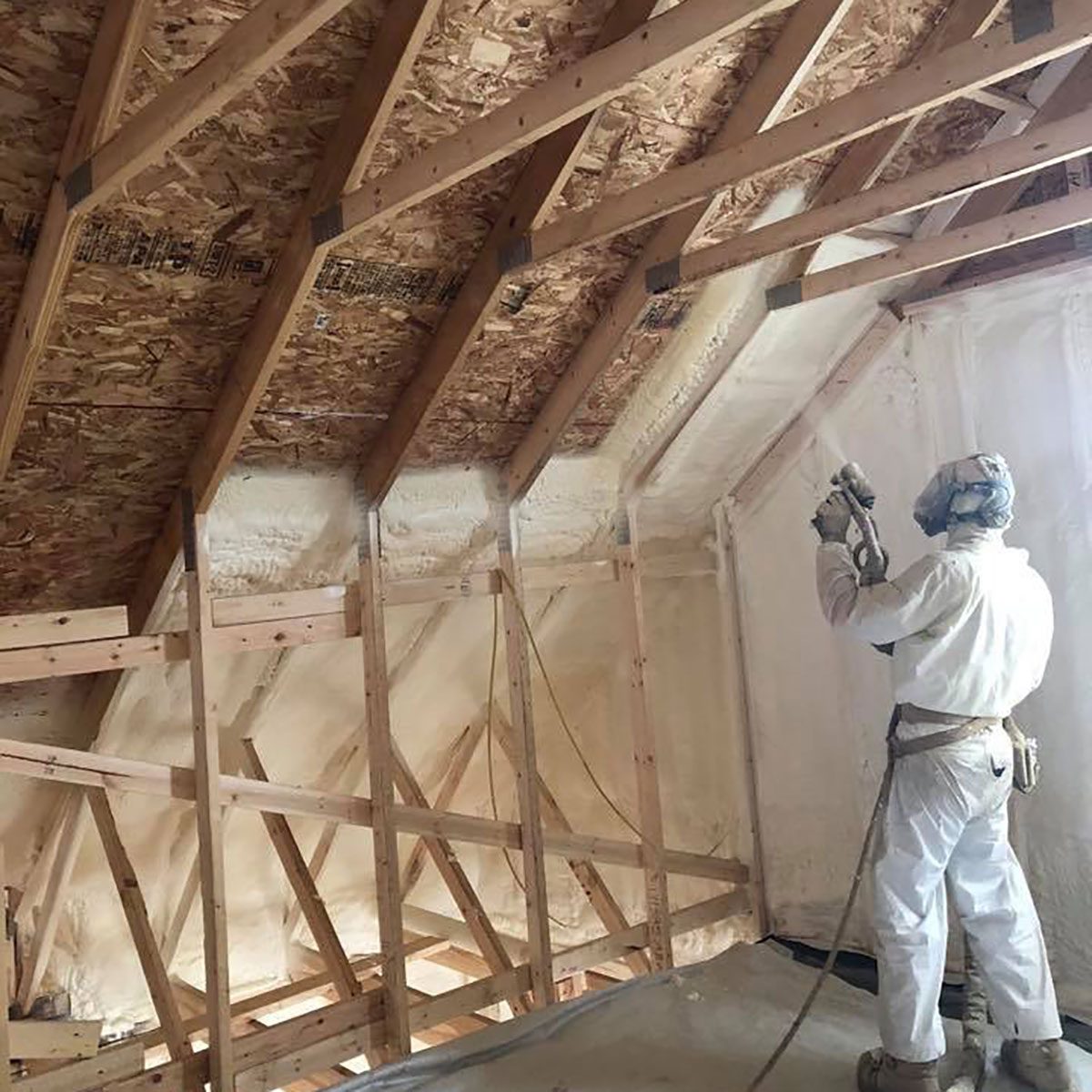Discover the Different Types of Attic Insulation and Their Distinct Advantages for Your Home's Power Effectiveness
.jpg)
Fiberglass Insulation
Fiberglass insulation is among the most typically used products for attic insulation because of its excellent thermal performance and cost-effectiveness. Made up of little glass fibers, this product effectively catches air, developing an insulating barrier that aids preserve constant interior temperature levels. Its high R-value per inch makes it especially efficient at standing up to heat transfer, which is critical for power preservation in homes.
Installment of fiberglass insulation is relatively uncomplicated, frequently readily available in batts or loose-fill forms, fitting numerous attic room arrangements. Furthermore, it is non-combustible and resistant to wetness, lowering the threat of mold and mildew advancement. This toughness adds to its longevity, making fiberglass a viable lasting financial investment for house owners.
Moreover, fiberglass insulation is typically manufactured from recycled products, which enhances its eco-friendliness. The material can likewise add to soundproofing, reducing sound transfer in between spaces. While it is vital to use protective equipment during installation to prevent inflammation from the fibers, the overall benefits of fiberglass insulation, including power savings and environmental considerations, make it a prominent choice for boosting attic performance and advertising a comfortable living atmosphere.
Spray Foam Insulation
Spray foam insulation is a very effective choice for attic insulation, recognized for its remarkable air securing and thermal efficiency. This innovative insulation product is made up of a blend of isocyanate and polyol material, which, when combined, broadens rapidly to load gaps and dental caries in the attic room room. Its capacity to stick to various surface areas makes sure a continuous obstacle against air leakages, substantially lowering heat loss throughout chillier months and warmth gain throughout warmer periods.
One of the key advantages of spray foam insulation is its high R-value per inch, which indicates it provides outstanding thermal resistance in a fairly slim application. This is especially advantageous in attics where space is frequently minimal. In addition, spray foam can aid decrease wetness build-up, reducing the danger of mold and mildew and mold growth, which can be damaging to both the structure and indoor air quality.
While the preliminary expense of spray foam insulation might be higher than traditional choices, its long-term power cost savings, combined with increased comfort and boosted home value, make it a rewarding investment for house owners seeking boosted energy performance. Attic Insulation DFW. Overall, spray foam insulation stands apart as an effective service for optimizing attic room insulation
Cellulose Insulation

Cellulose insulation is a prominent option for attic room insulation, primarily made up of recycled paper items treated with fire retardants. This ecologically friendly alternative is recognized for its exceptional thermal efficiency, efficiently minimizing warmth transfer in both summertime and winter months. The dense structure of cellulose enables it to fill up gaps and gaps in attic rooms, giving a smooth barrier against air leakages.
One of the significant benefits of cellulose insulation is its ability to withstand mold and mildew and insects, owing to the fire resistant therapies Check This Out utilized throughout manufacturing. In addition, it boasts a high R-value per inch, which converts right into superior power efficiency. Property owners can anticipate reduced you can try these out cooling and heating prices as a result of boosted insulation.
Installment is generally completed via blowing loose cellulose into the preferred location, enabling a effective and quick procedure. This method additionally decreases interruption to the existing framework. Cellulose insulation has a reasonably low ecological impact, as its manufacturing procedure makes use of recycled materials, adding to sustainable structure techniques.
Rock Wool Insulation
Among the numerous alternatives for attic insulation, rock wool, additionally understood as mineral wool, attracts attention because of its remarkable thermal and acoustic performance. Made from recycled or all-natural materials, rock woollen is developed by melting rock and rotating it into fibers, resulting in a product that supplies excellent insulation residential properties.
One of the substantial benefits of rock wool insulation is its high R-value, which shows its efficiency in resisting heat flow. This particular not only boosts energy performance yet likewise adds to keeping a comfy interior temperature level year-round. Furthermore, rock woollen is inherently fireproof, making it a more secure alternative for homes as it can endure high temperature levels without melting or releasing harmful fumes.
In addition, rock woollen insulation stands out in soundproofing capacities, successfully decreasing sound transmission in between spaces and from outside resources. On the whole, rock woollen insulation gives a comprehensive solution for boosting power performance, safety, and comfort in domestic setups.
Glowing Obstacle Insulation
Glowing barrier insulation functions as a reliable solution for decreasing heat transfer in attics, specifically in warmer environments. This sort of insulation works by showing induction heat far from living areas, thereby minimizing the amount of warmth that enters a home during hot climate - Attic Insulation DFW. Normally made up of an extremely reflective material, such as aluminum foil, glowing obstacles are set up in attic rooms, facing the roof, where they can intercept incoming warm from the sunlight
The main advantage of radiant obstacle insulation is its capacity to reduced cooling costs. By reflecting warm as opposed to absorbing it, radiant barriers can aid preserve a more stable indoor temperature level, decreasing the workload on cooling systems. This performance equates into lower energy bills and increased comfort for home owners.
In enhancement to energy financial see this savings, radiant obstacles can likewise add to boosted interior air top quality. By minimizing warm accumulation, they aid lessen humidity degrees, which can stop mold growth and improve general air blood circulation. When installed properly, glowing barrier insulation can be a vital enhancement to any type of energy-efficient home, making it a worthwhile consideration for property owners looking to boost their attic room insulation technique.
Verdict
Finally, recognizing the various sorts of attic insulation-- fiberglass, spray foam, cellulose, rock woollen, and radiant barriers-- enables home owners to make educated decisions relating to energy performance. Each insulation type presents one-of-a-kind advantages, such as exceptional thermal resistance, moisture administration, and sound attenuation. By choosing the proper insulation product, significant decreases in power costs can be achieved, together with improvements in indoor comfort. Ultimately, the right selection adds to an extra sustainable living environment and advertises total power preservation.

In final thought, understanding the various kinds of attic room insulation-- fiberglass, spray foam, cellulose, rock wool, and radiant barriers-- allows homeowners to make enlightened decisions regarding energy efficiency.